Beekeeping is the care of bee colonies, usually in man-made hives. Most such bees are honeybees in the genus Apis, but others such as Melipona stingless bees are also kept. Apiculture is a scientific method of keeping honeybees. The ‘apiculture’ comes from the Latin word ‘apis,’ which means bee. So, beekeeping is the care and management of bees for honey and wax production.
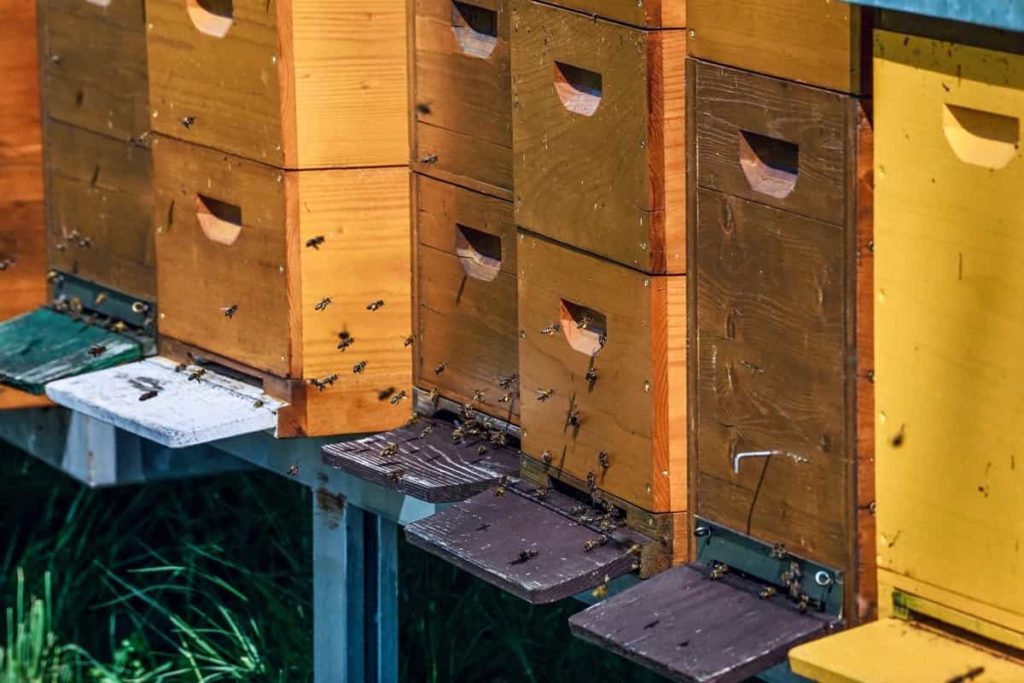
17 key rules for effective Beekeeping management
Key to successful beekeeping management
The key to beekeeping success lies primarily in three things:
- A good apiary site
- The good bee
- Adequate management
The main practice of keeping bees is called Apiculture. Bees are kept in the apiary. Bee hives produce wax, bee pollen, royal jelly, and flower pollen.
Major benefits of beekeeping
- Beekeeping provides honey, and it is the most valuable nutritional food.
- As an ingredient in them, they provide wax that plays an important role in many industries, including cosmetics, polishing, pharmaceutical industries, etc.
- Plays an appreciable role in pollination. Bees are an excellent source of pollen that helps increase the yield of many crops.
Key rules for production of high yields in beekeeping
Beekeepers who practice good hive management report higher yields each year. Their bee colonies make them of great importance to beekeeping. Beekeepers gain value by trading and using beehive products such as honey, wax, propolis, and royal jelly. Other beekeepers separate the bees and sell many of the package bees to other beekeepers who are starting new bee colonies.
High yield production of beehive products makes your beekeeping operation profitable and worth the continuous engagement. It also enables expansion when you want, making it easy to purchase the essential beekeeping supplies. In addition, they may hire tools, equipment, or labor for the beekeeping operation.
Effective equipment needed for beekeeping business
As a beekeeper, you need to procure your beekeeping equipment. And you can use this equipment to maintain the hive and harvest honey. Beekeeping supplies can be purchased from the town or your local city.
Bee protection equipment
- A light-colored bee suit that does not encourage bees to sting.
- A dark-colored hat and face veil—to reduce exposure to sunlight.
- Bee smoking – blowing smoke into the hive to calm the bees so you can work on the hive.
- Bee maker and brush – To remove bees from honey during harvest.
- Protective clothing – Shoes, clothing, Bee vail, Bee suit, gloves, queen catcher, feeder.
- Other helpful but not essential devices help the bees feed and remove wax from the hive.
Safe beekeeping tips for more production
There are many risks involved in beekeeping. You must make sure that your bees are safe. It includes safety for your bee colonies, neighbors, and animals. Properly managed beehives are safe for bees and provide the best conditions for bees to thrive. They can optimize the microclimate of the hive for optimal colony production and continuity.
Bees in such a hive can go out and forage without danger to people and animals. You are also comfortable working with hives in a beekeeping operation because you know you are safe. A well-maintained hive will have overgrown bees that can sting people and animals unnecessarily. You may also be injured by such hives while working in your apiaries.
Key rules for selection of Bees management
A beehive typically consists of a queen, hundreds of drones, and thousands of worker bees. Thus a settlement may include three or more species. A queen bee is a fertile bee that can give birth. And drone bees are male, while worker bees are sterilized bees that cannot reproduce. Following are some prominent types of bees.
- Indian Hive Bees
- Rock Bees
- Little Bees
- European and Italian Bees
- Dammer Bee or Stingless Bee
Effective rules for choosing a good apiary site
- Knowledge of the nature and habits of bees.
- (Selection of a suitable place for keeping bees.
- Management of bees during different seasons.
- Cross-hybridization in selected parents.
Choose an apiary site by considering the following:
- The Apiary ground should be clean and free of dry leaves etc., to avoid fire during summer.
- The apiary site should be located away from power stations, highways, and train tracks.
- The site should be in an open and shaded dry place.
- The site should have a natural/artificial ventilation gap. The site should receive morning and afternoon sun.
- The area should be rich in bee flora.
- There should be no other commercial animals within 2-3 km of the apiary house.
- There should be no source of stagnation/wastewater, chemical industry/sugar mill, etc., near the apiary.
In case you missed it: Bee Farming in South Africa: How to Start, Beekeeping Cost, and Profit
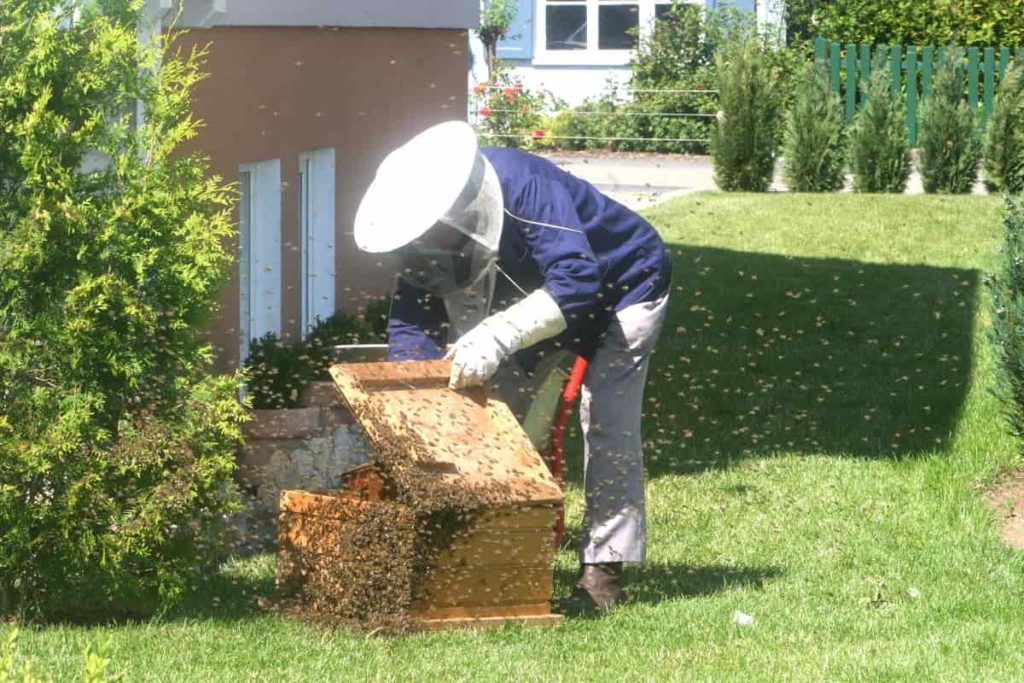
Effective management tips in beekeeping for beginners
- A beekeeper should start his business early in the season, which means he should start beekeeping at the right time when the bees will get full nectar from the flowers. You won’t get honey if you start it too early when the bees can’t find the flowers. Therefore, starting beekeeping early in the season is the right thing.
- Beekeeping can be started in any season, but generally, bees are fond of warm weather. Hence, spring is considered the best season to start beekeeping because the plant’s flowering also begins during this period.
- A beekeeper will need beekeeping equipment and bees to start his apiary. Buy good bees and start with a nucleus colony. In the beginning, you should start with minimal colonies; two bee colonies will be enough. After gaining experience, you can go for commercial beekeeping.
- A beekeeper should inspect the bees once every 7-10 days. Don’t overcomplicate things initially; keep it as simple as possible. Finally, watch the result and don’t expect much honey production in the first year. Keep practicing because by now, you have learned valuable information from your first attempt and applied it to your second attempt. Don’t worry; you will get a better result next time.
Points for successful beekeeping management
By pollinating trees, shrubs, and herbaceous plants, bees are important in producing food for all the other animals and birds in forest ecosystems that depend on them for edible berries, seeds, and fruits. Bees and trees belong together. Points that are very important for successful beekeeping or apiculture are as follows:
- Knowledge of the nature and habits of bees.
- Selection of a suitable place for keeping bees.
- Catching and hiving of swarms (group of bees).
Choosing a good apiary site – The site should be rich in bee flora that can provide forage for most of the year and have a good density of honey flow sources. To collect 20 kg of honey, a colony needs 100 blooming trees or 2-4 acres of blooming crop.
Tips to keep bees happy and healthy
- Buy clean hives and equipment – Buying clean hives and equipment is important to prevent disease.
- Keep apiary equipment clean – Cleaning your equipment regularly can prevent pests and diseases from taking over your hive before starting a new hive, hive tools, and any beeswax, beeswax, or honeydew accumulations.
- Provide water for hydrated hives – Like all other creatures, bees need constant access to a safe and clean water source. Place a shallow dish or birdbath that provides a safe place to land nearby.
- Allow air to flow – When the temperature rises, it is important to allow air to flow to prevent your hive from overheating and melting the honey.
- Inspect regularly and be vigilant – When monitoring your bees’ overall health and happiness, be alert, and regular hive inspections are key. Keep an eye out for bee pests and diseases that can keep your bees from being healthy and happy.
Rules for management of beekeeping
- Choose a good location to locate the apiary, preferably in an open, dry area with shade.
- Practice general colony hygiene in beehives, such as apiary cleaning, including frequent cleaning of bottom boards.
- Select and multiply bee colonies only from disease-resistant stock.
- Make a plan – don’t be deceived; beekeeping involves knowing where to buy bees, the equipment, the records you need to keep, your budget, and many other things.
- Make a plan to make sure you don’t miss every aspect. Also, you must have a good plan to run a successful honey business.
- Understand how to package honey – You must know how to harvest and package honey safely. Not knowing how to harvest honey can damage your hive.
- You can ask a professional beekeeper to show you how to harvest first so that you can familiarize yourself with the process. To harvest honey properly, buying the right equipment, such as a bee smoker and brush, honey extractor, and other important tools, is advisable.
- It will also help you to package your honey properly. Also, different types of honey bottles come in different sizes. You will want to decide on the amount of honey you want to sell so you can buy your honey bottles accordingly.
A business plan will guide you on how to grow your business. You can choose a template for your business plan on the Internet. Be sure to include the following aspects in your business plan:
- A description of the products you want to sell.
- Plan to promote your honey products.
- A detailed description of the honey market, including your competitors
- Financials
Safe beekeeping practices to reduce production costs
The minimum cost to start beekeeping with one hive is about $760 for the first year. A set of hive components costs about $270. A package of bees is about $175. Protective gear and basic equipment cost $165, while miscellaneous costs for supplies and sales tax are about $150.
In case you missed it: How to Start Honey Bee Farming/Beekeeping from Scratch: A Complete Guide for Beginners
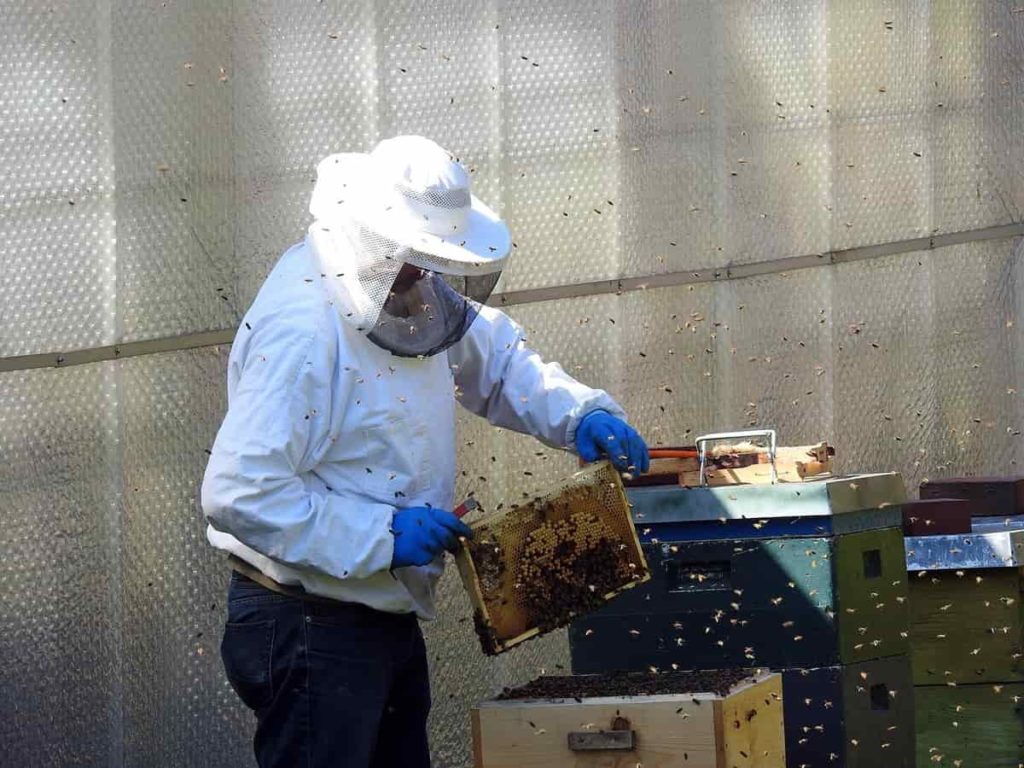
Important beekeeping practices;
Protective clothing and equipment – It is important to wear protective clothing that is smooth and light in color as bees react negatively to dark or woolen materials. Clothing also is clean – bees dislike certain odors such as dog, horse, and diesel fuel. Make sure there are no holes in the protective clothing as bees can crawl through small holes. When you are finished working in the apiary, move well away from the hive before removing protective clothing. It is not unusual for a bee or two to follow a beekeeper.
Beekeeping in hot weather – Take special care when working with bees on hot days. Wearing protective clothing and working the hive in full sunlight can easily lead to overheating and dehydration. Frequent drinking and providing cool fluids to the beekeepers is essential to detect early signs of heat stress.
Some safety measures in beekeeping are;
- Protective clothing and equipment
- Beekeeping hat
- Beekeeping clothing and bee suits
- Beekeeping gloves
- Shoes
Things should be considered while keeping bees
Selection of good quality bees – Beekeeping can be done by keeping two types of bees. Apis cerena and Apis mellifera depend on flowering conditions and investment potential. However, both cases’ success depends on the bees’ quality, especially the queen. The below points should be considered while selecting bee colonies.
- Purchase disease-free bee colonies from existing beekeepers after receiving training on the subject.
- Select and breed bee colonies with disease-resistant, high honey production, young, healthy, and high egg-laying queens, etc.
- Keep colonies with good queens.
- Capture a few colonies of bees from their natural habitat in forests which can be used for further breeding/multiplication to prevent inbreeding.
- Fresh water supply in the apiary.
- Ensure the availability of fresh water, preferably in shallow containers near the fry, to maintain a healthy apiary.
Water is required for the following:
- They ensure proper incubation of eggs to maintain adequate humidity in the colony.
- Bee bread feeding by nurse bees requires a mixture of honey and pollen, which requires water.
- When the apiary temperature rises above 37°C, bees use water to evaporate and cool the colony.
Rules for bee management importance
Good bee management gives you many benefits. It ensures that your bee colony stays healthy and produces many bee products for you. For conservation beekeepers, they can grow large colonies that they can divide more often and that naturally swarm many times over.
Proper season – When bees feed on nectar from sprouts, you should try to start modern bee farming properly. If you want to start your project too early, you won’t be able to collect honey when the bees haven’t yet gotten to the flowers. If you want to go beyond the point of no return, the flowers will lose all nectar, and you may not even get sprouts. Consequently, it is advisable to start a beekeeping business as soon as the season begins. If you’re looking for bee hatching season, it’s March. You can start a beekeeping project at any time of the year.
Get started with bees – Anyone who wants to start a beekeeping project has a convincing element somewhere in their mind. Today’s beekeepers expect massive production of honey, given this situation. In any case, several factors determine the outcome of honey. You should also choose unusual bumblebees. These are the most popular bee species in India. You can use them like this to start the bumblebee cultivation method.
New tools for modern bee farming – A variety of new tools are available for modern bee farming. You should choose the right tools for your bee farm. Also, you should avoid using second-hand tools. Although you will find second-hand tools for less, it is always better to use new tools.
In case you missed it: How to Start Beekeeping in Australia: For Beginners, Courses, Rules, and Regulations
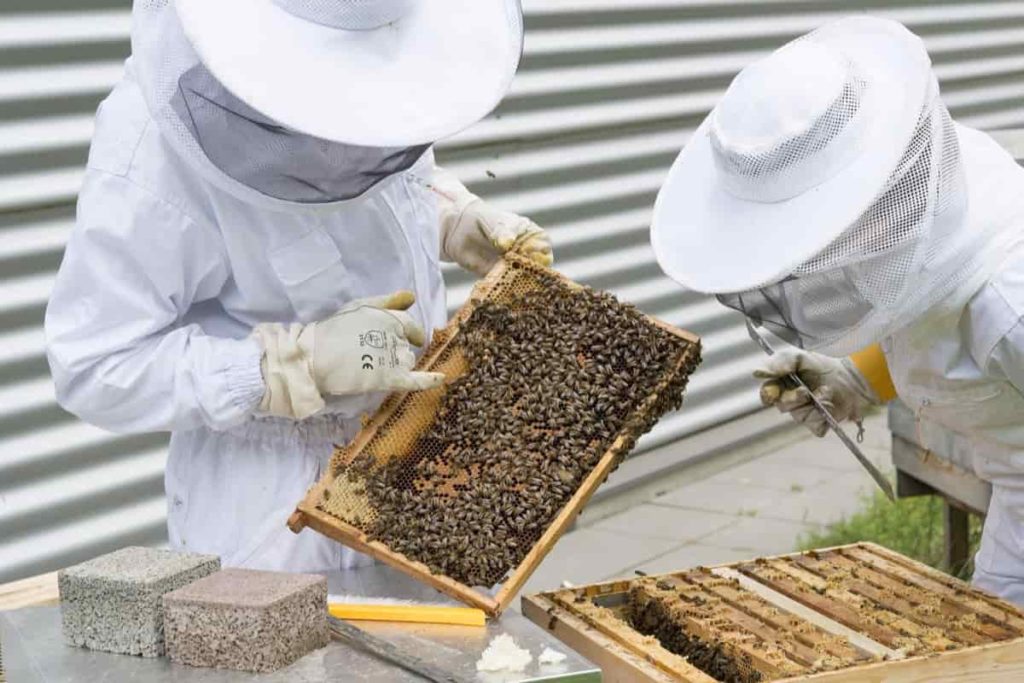
Key rules for feeding bees efficiently
New colonies often need additional nutrition to get off to a good start. Many beekeepers invest time and money in feeding colonies until they are established. Feeding bees sugar water allows colonies with small populations to grow rapidly. Whether you have new hives from packages, small swarms, or splits, you need to understand their needs. They are often starting with nothing. The comb should be made quickly.
Good population and sufficient food are the two most important factors. Feeding can ensure they have the resources they need to grow optimally. But, bee colonies need more than just sugar. Foragers collect pollen as a protein source to nurture the young. In many cases, foragers can find enough pollen in the field. But, beekeepers can feed their colonies with extra pollen if natural sources are sparse. Dry pollen in an outdoor feeder is one method.
For other colonies, pollen patties are made and placed inside the hive. But, this must be done with caution, especially in areas where small hive beetles are present. It is where good hive management practices rely on understanding the problems faced by your bees. Local conditions also come into play here.
Artificial feeding – Bees do not visit every flower. They only visit flowers with enough pollen and nectar (non-toxic to them) and must be within their reach. Artificial food becomes necessary whenever nectar and pollen are dearths in nature, and these materials are not stored in the hive. Dearth periods in this country vary from region to region.
Artificial feed preparation – Sugar syrup is prepared by boiling 100 grams of sugar in 150-200 ml of hot water and cooling it. It is presented in a 400 ml glass bottle or cigarette tin with a mouthpiece covered by a mark in cloth held tightly by a rubber band or thread. The bottle is placed upside down in the super with or without an inner cover. Colonies should be fed in the evening on alternate days.
Effect of artificial feeding: Bee colonies should be well fed during shortages, especially in winter. In such cases swarming starts earlier and helps to strengthen the bee colonies before the honey flow season begins.
Effective tips for increasing the number of colonies
A beekeeper needs to increase his bee colony every year. It can be done by dividing the existing colony into 2 or 3 sub-colonies with fresh queens.
1. A private or government agency purchase can recognize a bee colony. Only colonies should be selected or purchased with at least 5-6 brood frames covered with bees and a healthy, active queen.
2. The number of bee colonies can be increased by dividing the existing colonies during the swarming season when the queen cells are constructed. It is done by keeping 50% of the brood comb in an empty hive with the old queen. The hive must be removed at least 0-8 km from its original location. The other half of the colony should be kept in place along with the queen cells.
In case you missed it: How this Woman Made 2 Lakh per Month from Beekeeping: A Success Story of Honey Bee Farmer
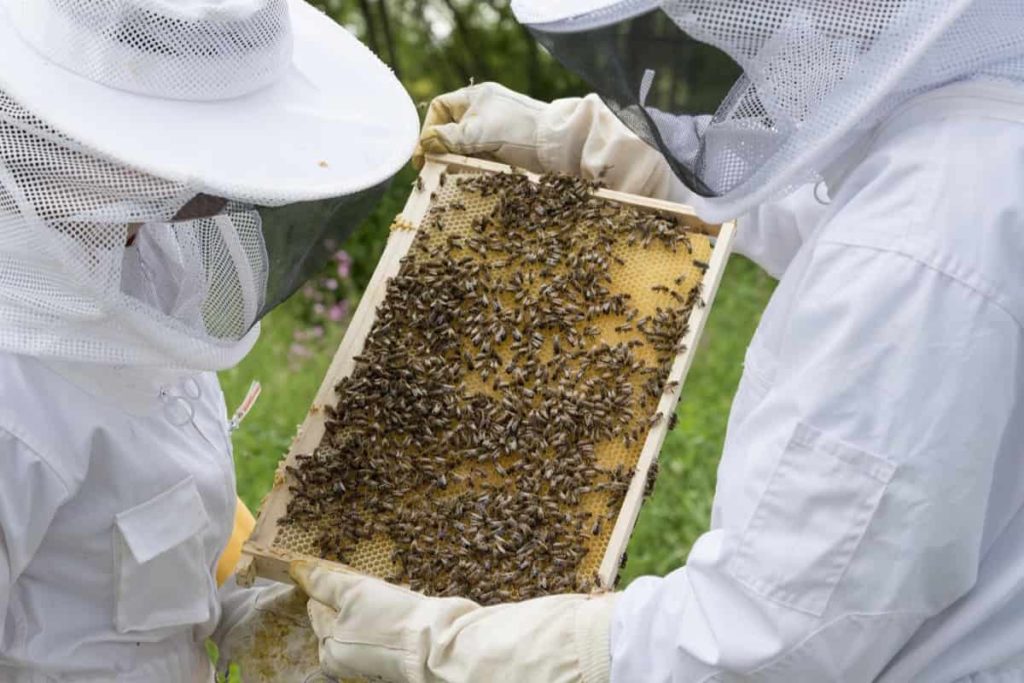
3. Another method is to allow the colony to swarm and transfer the swarm to an empty hive by catching it with a brood comb from another colony. Sheep can be kept in the same area.
4. Bee colonies can be obtained from natural sources. Before bagging the colony, fumigation should be done. The combs are cut and then placed in frames with wire to secure them tightly. The frames are transported to the hive with the bees.
Seasonal management – Pollen and nectar are available only during certain periods. When an additional food source is available, it is called the honey flow season. On the contrary, there will be a food shortage during periods of scarcity. Certain management strategies are required during climatic extremes such as summer, winter, and monsoon.
Key rules for the management of honey bee diseases
Bees can be affected by diseases, and before any control measures can be taken, the root cause of any abnormality or disease in the bees needs to be determined. It is better to contact researchers/scientists/beekeepers from nearby bee centers or universities or government departments. After the correct diagnosis of the particular disease cause, the instructions/recommendations given by the specialist should be strictly followed. However, general advice for managing common bee diseases is given below;
- Choose a good place to locate the apiary, preferably in an open, dry place with shade.
- Practice general colony hygiene in beehives, such as beekeeping, including frequent cleaning of bottom boards.
- Select and multiply bee colonies only from disease-resistant stock.
- Keep colonies with good queens.
- Check the colonies periodically for any abnormalities or changes in bee behavior.
- If you observe diseased colonies, separate them from healthy ones. Handle diseased and healthy colonies separately.
- Keep colonies strong by adding sealed brood combs or worker populations only from healthy colonies and providing adequate food during dearth periods.
- Avoid robbing, drifting, escaping, and relocating bee colonies when you notice disease symptoms.
Rules for marketing strategy for beekeeping business
It is an important part of this business. Too often, we try to develop the product and don’t focus on marketing which is an important part of the beekeeping process. Develop a market for your honey and beeswax. This list is where you can market your honey business;
- Selling honey to friends and family.
- Ask health food stores and markets to sell honey.
- Explore the feasibility of making beeswax candles to sell at gift shops and craft shows.
- Check out natural stores and restaurants in your area – many of them will be willing to resell your products and capitalize on their recipes.
- Hire some local workers to sell your honey door-to-door, village-to-village, or local market.
- Market wax at hardware stores and do-it-yourself at craft shows and flea markets.
- Attend local farmer’s and flea markets, and participate in local events.
- Through education, you can educate consumers and educate them on the benefits of using local honey instead of buying it at the grocery store.
In case you missed it: How To Start Beekeeping For Beginners
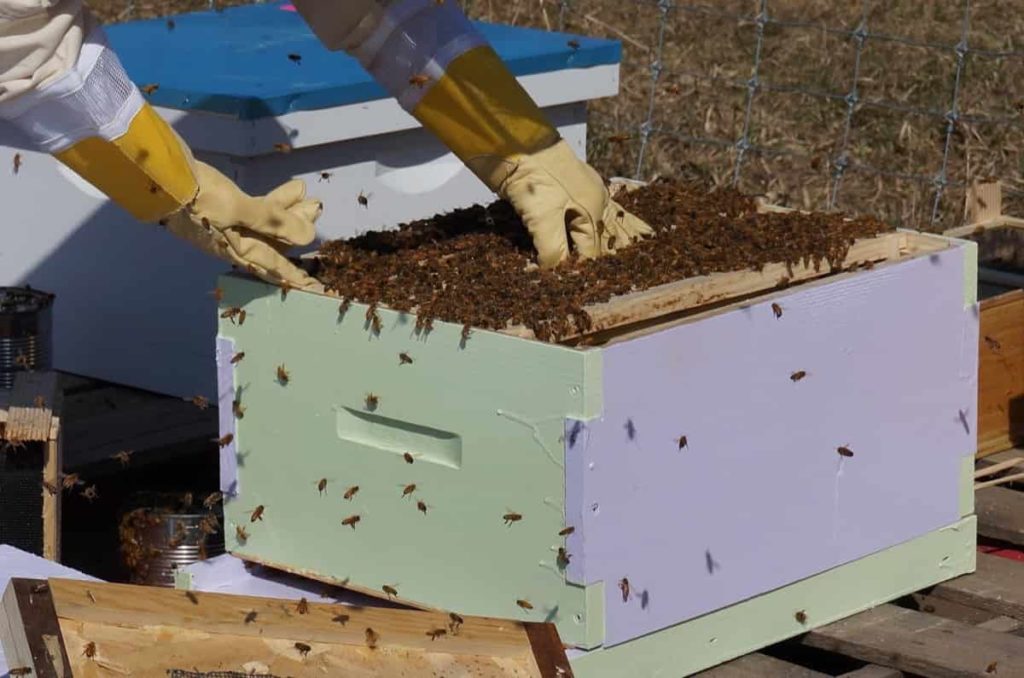
Conclusion
Beekeeping is the ancient agricultural practice of keeping bees in enclosed structures called apiaries. Beekeeping is the deliberate care of beehives by humans. A beekeeper may keep bees to collect honey and wax, pollinate crops, or supply bees for sale to other beekeepers. Ideally, the honey business is attractive to those who love beekeeping. However, like any other start-up business, you need to get things in order before you can start selling your honey. First, you have to buy materials and research beekeeping and honey business basics.
- How to Make Houseplants Bushy: Effective Tips and Ideas
- Innovative Strategies for Boosting Coconut Pollination and Yield
- Pollination Strategies for Maximum Pumpkin Yield
- The Complete Guide to Chicken Fattening: Strategies for Maximum Growth
- Natural Solutions for Tulip Problems: 100% Effective Remedies for Leaf and Bulb-Related Issues
- Revolutionizing Citrus Preservation: Towards a Healthier, Greener Future
- Natural Solutions for Peony Leaf and Flower Problems: 100% Effective Remedies
- Maximizing Profits with Avocado Contract Farming in India: A Comprehensive Guide
- Natural Solutions for Hydrangea Problems: 100% Effective Remedies for Leaf and Flowers
- The Ultimate Guide to Choosing the Perfect Foliage Friend: Bringing Life Indoors
- From Sunlight to Sustainability: 15 Ways to Use Solar Technology in Agriculture
- The Ultimate Guide to Dong Tao Chicken: Exploring from History to Raising
- The Eco-Friendly Makeover: How to Convert Your Unused Swimming Pool into a Fish Pond
- Mastering the Art of Delaware Chicken Farming: Essentials for Healthy Backyard Flocks
- 20 Best Homemade Fertilizers for Money Plant: DIY Recipes and Application Methods
- How to Craft a Comprehensive Free-Range Chicken Farming Business Plan
- Brighten Your Flock: Raising Easter Egger Chickens for Beauty and Bounty
- How to Optimize Your Poultry Egg Farm Business Plan with These Strategies
- Subsidy for Spirulina Cultivation: How Indian Government Schemes Encouraging Spirulina Farmers
- Ultimate Guide to Raising Dominique Chickens: Breeding, Feeding, Egg-Production, and Care
- Mastering the Art of Raising Jersey Giant Chickens: Care, Feeding, and More
- Ultimate Guide to Raising Legbar Chickens: Breeding, Farming Practices, Diet, Egg-Production
- How to Raise Welsummer Chickens: A Comprehensive Guide for Beginners
- How to Protect Indoor Plants in Winter: A Comprehensive Guide
- Ultimate Guide to Grow Bag Gardening: Tips, Tricks, and Planting Ideas for Urban Gardeners
- Guide to Lotus Cultivation: How to Propagate, Plant, Grow, Care, Cost, and Profit
- Agriculture Drone Subsidy Scheme: Government Kisan Subsidy, License, and How to Apply Online
- Ultimate Guide to Raising Araucana Chickens: Breed Profile, Farming Economics, Diet, and Care
- Bringing Hydroponics to Classroom: Importance, Benefits of Learning for School Students
- Ultimate Guide to Raising Polish Chickens: Breed Profile, Farming Economics, Diet, and Care
- Ultimate Guide to Raising Australorp Chickens: Profile, Farming Economics, Egg Production, Diet, and Care
- Silkie Chicken Farming: Raising Practices, Varieties, Egg Production, Diet, and Care
- Sussex Chicken Farming: Raising Practices, Varieties, Egg Production, Diet and Care
- Homemade Feed Formulations for Livestock: Discover Cost-effective Starter to Finisher Feed Recipes
- 20 Best Pig Weight Gain Supplements: Top Swine Weight Gain Formulas
- Ultimate Guide to Elderberry Farming: Propagation, Planting, Yield, Cost, and Profit
Very informative and straight forward.
Would learn quite a lot as it provides a more or less step-by-step simplified approach.
Thank you for the basic hands-on.